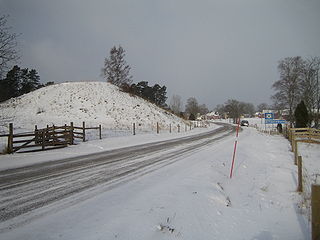
Vendel is a village at Tierp Municipality in Uppland, Sweden. The village overlooks Vendelsjön, a long inland stretch of water near the Vendel river which has its confluence with the river Fyris. Vendel was the site of an ancient royal estate, part of Uppsala öd, a network of royal estates meant to provide income for the medieval Swedish kings. A large number of archaeological finds have been found here, which have given their name to the Vendel Period.

The Benty Grange helmet is an Anglo-Saxon boar-crested helmet from the 7th century AD. It was excavated by Thomas Bateman in 1848 from a tumulus at the Benty Grange farm in Monyash in western Derbyshire. The grave had probably been looted by the time of Bateman's excavation, but still contained other high-status objects suggestive of a richly furnished burial, such as the fragmentary remains of a hanging bowl. The helmet is displayed at Sheffield's Weston Park Museum, which purchased it from Bateman's estate in 1893.

Birger Nerman was a Swedish archaeologist, historian and philologist who specialized in the history and culture of Iron Age Sweden.

The Coppergate Helmet is an eighth-century Anglo-Saxon helmet found in York, England. It was discovered in May 1982 during excavations for the Jorvik Viking Centre at the bottom of a pit that is thought to have once been a well.

A grave field is a prehistoric cemetery, typically of Bronze Age and Iron Age Europe.

The Sutton Hoo helmet is a decorated Anglo-Saxon helmet found during a 1939 excavation of the Sutton Hoo ship-burial. It was buried around the years c. 620–625 CE and is widely associated with an Anglo-Saxon leader, King Rædwald of East Anglia; its elaborate decoration may have given it a secondary function akin to a crown. The helmet was both a functional piece of armour that would have offered considerable protection if ever used in warfare, and a decorative, prestigious piece of extravagant metalwork. An iconic object from an archaeological find hailed as the "British Tutankhamen", it has become a symbol of the Early Middle Ages, "of Archaeology in general", and of England.

The Pioneer Helmet is an Anglo-Saxon boar-crested helmet from the late seventh century found in Wollaston, Northamptonshire, United Kingdom. It was discovered during a March 1997 excavation before the land was to be mined for gravel and was part of the grave of a young man. Other objects in the grave, such as a hanging bowl and a pattern welded sword, suggest that it was the burial mound of a high-status warrior.

The Shorwell helmet is an Anglo-Saxon helmet from the early to mid-sixth century AD found near Shorwell on the Isle of Wight in southern England. It was one of the grave goods of a high-status Anglo-Saxon warrior, and was found with other objects such as a pattern-welded sword and hanging bowl. One of only six known Anglo-Saxon helmets, alongside those found at Benty Grange (1848), Sutton Hoo (1939), Coppergate (1982), Wollaston (1997), and Staffordshire (2009), it is the sole example to derive from the continental Frankish style rather than the contemporaneous Northern "crested helmets" used in England and Scandinavia.
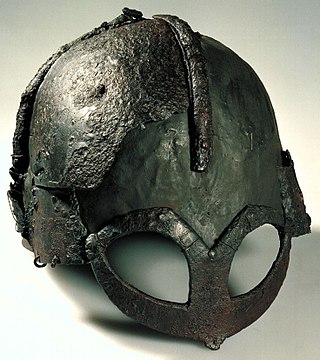
The Gjermundbu helmet is a Viking Age helmet.

Halla is a populated area, a socken, on the Swedish island of Gotland. It comprises the same area as the administrative Halla District, established on 1 January 2016.
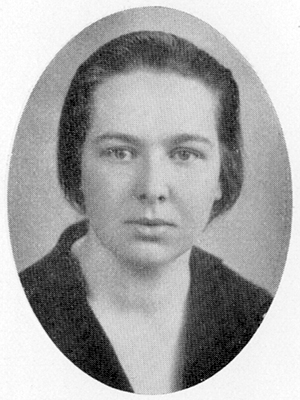
Greta Arwidsson was a Swedish archaeologist. Alongside other work, she is known for her study of the Valsgärde graves, published from the 1940s until the 1970s.
Björn Ambrosiani is a Swedish archaeologist and former civil servant. He worked at the Swedish History Museum and the Swedish National Heritage Board, as a research director among other positions.
Dominic Tweddle,, is an English archaeologist specialising in Anglo-Saxon studies and the director general of the National Museum of the Royal Navy. Previously he spent time as a research assistant at the British Museum and as the assistant director of the York Archaeological Trust, where he helped develop the Jorvik Viking Centre. He is also an honorary professor at the UCL Institute of Archaeology and the University of Portsmouth.

The Tjele helmet fragment is a Viking Age fragment of iron and bronze, originally comprising the eyebrows and noseguard of a helmet. It was discovered in 1850 with a large assortment of smith's tools in Denmark, and though the find was sent to the National Museum of Denmark, for 134 years the fragment was mistaken for a saddle mount. In 1984 it was properly identified by an assistant keeper at the museum as the remainder of one of only five known helmets from the Viking era.

The Gevninge helmet fragment is the dexter eyepiece of a helmet from the Viking Age or end of the Nordic Iron Age. It was found in 2000 during the excavation of a Viking farmstead in Gevninge, near Lejre, Denmark. The fragment is moulded from bronze and gilded, and consists of a stylised eyebrow with eyelashes above an oval opening. There are three holes at the top and bottom of the fragment to affix the eyepiece to a helmet. The fragment is significant as rare evidence of contemporaneous helmets, and also for its discovery in Gevninge, an outpost that is possibly connected to the Anglo-Saxon epic Beowulf. It has been in the collection of the Lejre Museum since its discovery, and has been exhibited internationally as part of a travelling exhibition on Vikings.
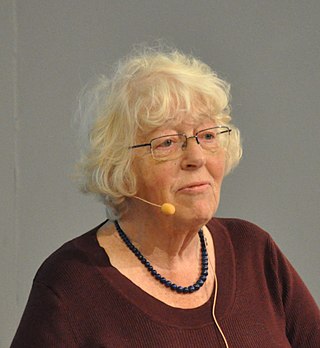
Birgit Arrhenius is a Swedish archaeologist and professor emeritus at Stockholm University. She was a professor of laboratory archaeology, and the first head of the university's Archaeological Research Laboratory. Her work has studied places including Helgö and Mälaren, and she has researched prehistoric pressblech and garnet cloisonné work. Arrhenius is a member of the Royal Swedish Academy of Sciences, and was in 1992 the recipient of the Royal Patriotic Society's Gösta Berg Medal.

The Lokrume helmet fragment is a decorated eyebrow piece from a Swedish helmet dating from the Viking Age. Discovered in Lokrume, a small settlement on the island of Gotland, it was first published in 1907 and is in the collection of the Gotland Museum. It is made of iron, the surface of which is decorated with silver and niello that forms an interlaced pattern.
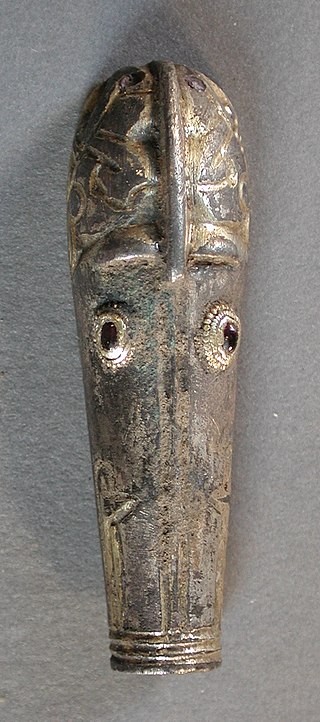
The Horncastle boar's head is an early seventh-century Anglo-Saxon ornament depicting a boar that probably was once part of the crest of a helmet. It was discovered in 2002 by a metal detectorist searching in the town of Horncastle, Lincolnshire. It was reported as found treasure and acquired for £15,000 by the City and County Museum, where it is on permanent display.

The Hellvi helmet eyebrow is a decorative eyebrow from a Vendel Period helmet. It comprises two fragments; the arch is made of iron decorated with strips of silver, and terminates in a bronze animal head that was cast on. The eyebrow was donated to the Statens historiska museum in November 1880 along with several other objects, all said to be from a grave find in Gotland, Sweden.

The Yarm helmet is a circa 10th-century Viking Age Anglo-Scandinavian helmet that was found in Yarm in the North Riding of Yorkshire, England. It is the first relatively complete Anglo-Scandinavian helmet found in Britain and only the second relatively complete/intact Viking helmet discovered in north-west Europe.




























